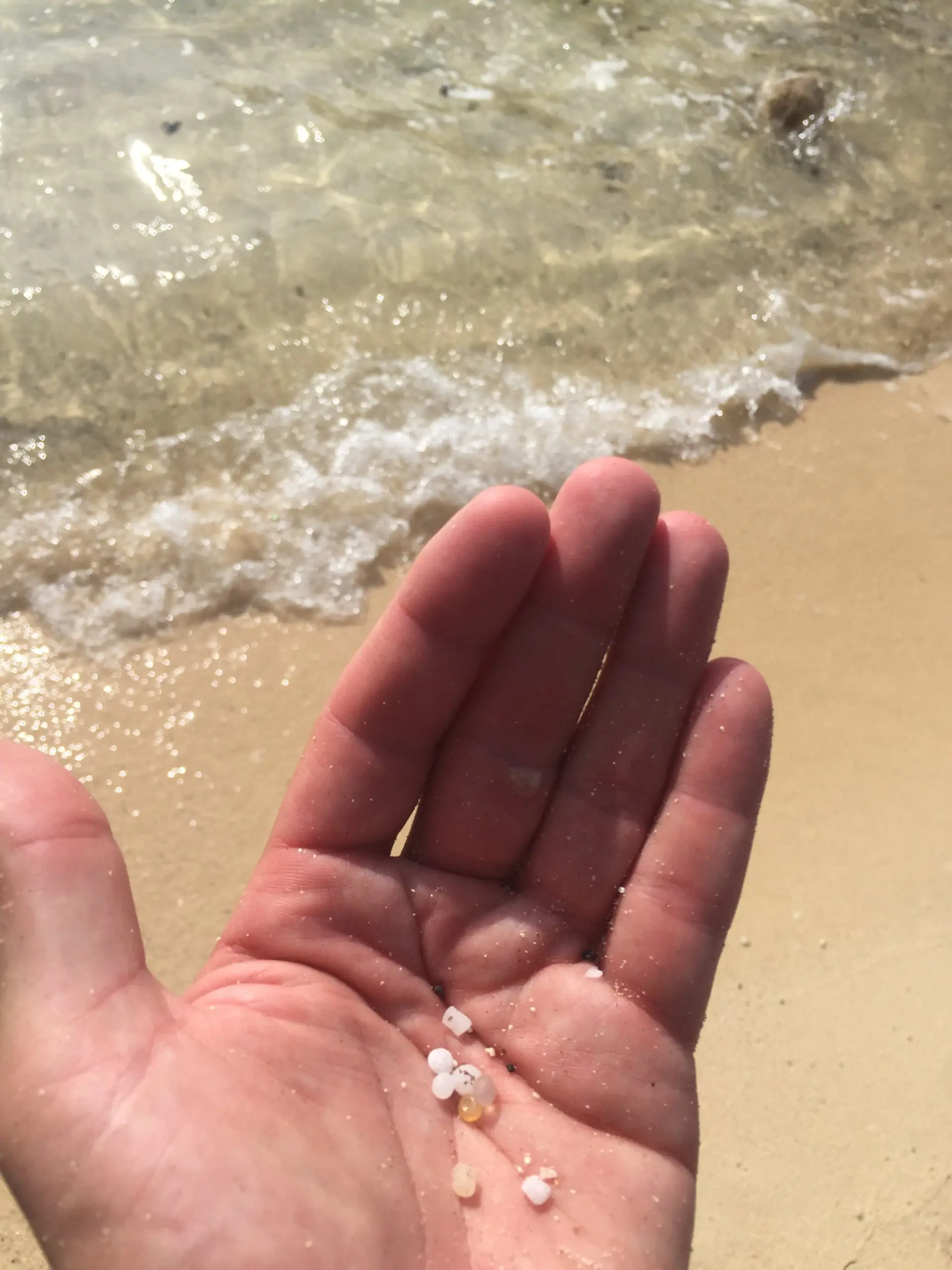Nurdles on beaches and in dunes are barely visible as the small plastic granules can hardly be distinguished in the sand. Even well-trained eyes only see a fraction of the problem, and these are often the granules that float such as polyethylene and polypropylene.
The other half of the manufactured nurdles consists of plastics that do not float such as PET granules that are used for bottled drinks. On the verges and in the drain outside the gates of BASF and Covestro in Antwerp, we found countless plastic granules that did not pass the float test. These granules would sink to the bottom in open water, just like the polystyrene nurdles from the MSC Zoe and various types of plastic, such as PVC, that are produced as a powder.
Plastic never decomposes, but instead, under the influence of UV light, wind, waves and other natural elements, breaks down into ever smaller fragments over time. Nurdles, categorised as ‘microplastics’ as they are smaller than 5 millimetres, fall apart into even smaller ‘nanoplastics’. They eventually disintegrate into such tiny microscopic pieces that they can be eaten by the very smallest animals at the bottom of the food chain.
The consequences for animals and the environment and the consequences for human health are reason enough for Plastic Soup Foundation to use the means it has available to put a stop to this invisible disaster.
